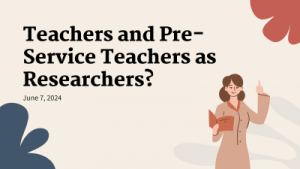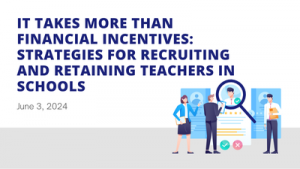David Carless and Jiaqi Dai
The ability to reflect on experience and then modify or enhance behaviors is useful in a number of academic, professional and daily life settings.
The notion of reflection in the context of learning was initially articulated by Dewey, defining it as “the active, persistent and careful consideration of any belief or supposed form of knowledge in the light of the grounds that support it and the further conclusion to which it tends” (Dewey, 1933, p6).
As highlighted by Dewey, reflection is ‘a thoughtful process’ that educators ought to foster in themselves and in all students.
More recent research on feedback and reflection adopts the concept that “reflection is a mental process that incorporates critical thought about an experience and demonstrates learning that can be taken forward” (Quinton & Smallbone, 2010). It can support learners to cope with challenging situations and pursue lifelong personal and professional development in a knowledge-based society (Boud & Walker, 1990).
Whilst purposeful reflection is clearly valuable, how to stimulate it amongst learners in organizations and universities is far from straight-forward. Worthwhile strategies include coaching and ‘preflection’. Coached reflection is defined as reflection prompted by formal and intentional interventions in evoking cognitive processes that enable recipients to stand back from the action and pinpoint the areas that require further attention (Anseel et al., 2009). Preflection consists of activities conducted ahead of learning experiences to strengthen engagement in the subsequent activity (Brand et al., 2016; Ellis et al., 2022). Preflection encourages ‘anticipatory reflection’ which assists recipients in developing motivation, critiquing pre-assumptions, and considering well-reasoned solutions to problems (Slavich & Zimbardo, 2012).
Within the feedback literature, a few articles have tried to draw linkages between reflection and feedback uptake. Reflection can involve proactive recipience of feedback messages whereby students ultimately assume ownership and responsibility over the function of feedback to enhance future work (Harris et al., 2023). A key issue for feedback uptake is the depth of cognitive processing of feedback messages and reflection encourages deep engagement with feedback inputs (Anseel et al., 2009).
In order for students to reflect purposefully on feedback inputs, they need feedback literacy: capacities to interpret and act upon feedback in well-judged ways (Carless & Boud, 2018). Research with first-year Engineering undergraduates suggests that using reflective logs to stimulate reflection carries some potential in promoting student feedback literacy at scale but that students often find it difficult to produce insightful reflections (Coppens et al., 2023).
Students need support in developing the capacities to engage in purposeful reflection on feedback inputs of different kinds. Accordingly, in recent research at HKU the longitudinal development of student reflective feedback literacy was identified as a pertinent issue. Student reflective feedback literacy is defined as capacities for considered analysis of previous feedback evidence and experiences in order to inform and enhance ongoing efforts to seek, generate, make sense of, and use feedback information of different forms (Carless & Young, 2023). In this case, reflective feedback literacy was stimulated through longitudinal compilation of a student reflective journal integrated with collaborative dialogues between the two co-researchers focused on action planning for feedback uptake.
A potential implication for practice is that teachers facilitate the development of student reflective feedback literacy by providing regular opportunities within the curriculum for students to share, discuss and analyze feedback evidence and experiences (Carless & Young, 2023). How might this be carried out? Students could be involved in strategies that promote reflection e.g. goal setting and action planning after receiving teacher feedback. These kinds of individual reflections can be supplemented by dialogic reflections in pairs through a which a stimulus for reflection emerges through collective co-construction of new understandings and ways forward. This kind of feedback sharing enables students to seek feedback from their peers and elicit their interpretations of feedback that has been received (Leenknecht & Carless, 2023). Such paired reflection would need relationships of trust within an atmosphere of psychological safety.
To sum up, reflection is both a tool for learning enhancement in various domains and a means of promoting engagement and uptake of feedback messages of different forms. Reflective feedback literacy denotes the capacities to reflect purposefully on feedback experiences as a stimulus for improvement. Did you seek, generate or receive any useful feedback recently?
References
Anseel, F., Lievens, F., & Schollaert, E. (2009). Reflection as a strategy to enhance task performance after feedback. Organizational Behavior and Human Decision Processes, 110(1), 23-35.
Boud, D., & Walker, D. (1990). Making the most of experience. Studies in Continuing Education, 12(2), 61-80.
Brand, G., Osborne, A., Carroll, M., Carr, S. E., & Etherton-Beer, C. (2016). Do photographs, older adults’ narratives and collaborative dialogue foster anticipatory reflection (“preflection”) in medical students? BMC medical education, 16(1), 1-9.
Carless, D., & Boud, D. (2018). The development of student feedback literacy: enabling uptake of feedback. Assessment & Evaluation in Higher Education, 43(8), 1315-1325.
Carless, D., & Young, S. (2023). Feedback seeking and student reflective feedback literacy: a sociocultural discourse analysis. Higher Education, 1-17.
Coppens, K., Van den Broeck, L., Winstone, N., & Langie, G. (2023). Capturing student feedback literacy using reflective logs. European Journal of Engineering Education, 1-14.
Dewey, J. (1933). How We Think: A Restatement of the Relation of Reflective Thinking to the Educative Process. D.C. Heath & Co Publishers.
Ellis, G. D., Locke, D., Jorgensen, K., Jiang, J., & Williams, M. (2022). Enriching Intentional Youth Program Experiences Through Preflection, Action, and Reflection. Journal of Youth Development, 17(1), 83-101.
Harris, R., Blundell-Birtill, P., & Pownall, M. (2023). Development and evaluation of two interventions to improve students’ reflection on feedback. Assessment & Evaluation in Higher Education, 48(5), 672-685.
Leenknecht, M. & Carless, D. (2023). Students’ feedback seeking behaviour in undergraduate education: A scoping review, Educational Research Review.
Nolan, A., Raban, B., & Waniganayake, M. (2005). Evaluating a strategic approach to professional development through guided reflection. Reflective Practice, 6(2), 221-229.
Quinton, S., & Smallbone, T. (2010). Feeding forward: using feedback to promote student reflection and learning–a teaching model. Innovations in education and teaching international, 47(1), 125-135.
Slavich, G. M., & Zimbardo, P. G. (2012). Transformational teaching: Theoretical underpinnings, basic principles, and core methods. Educational psychology review, 24, 569-608.



